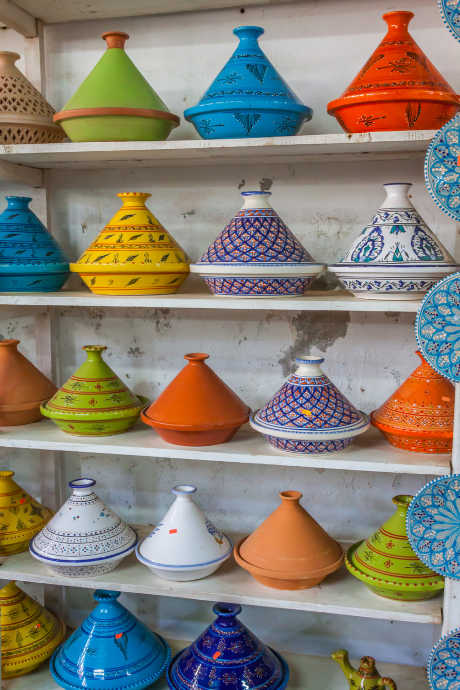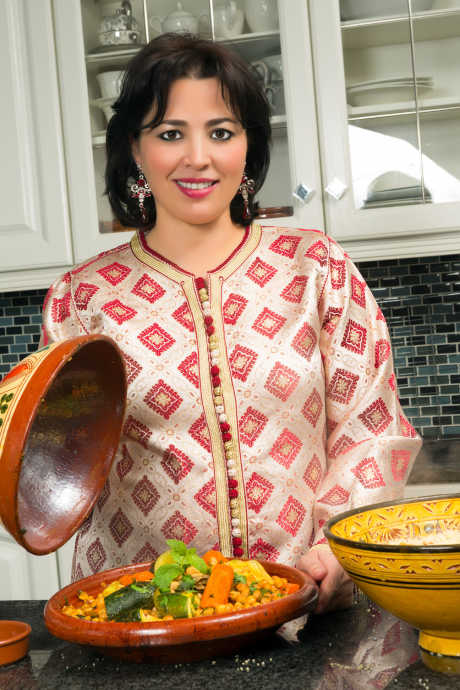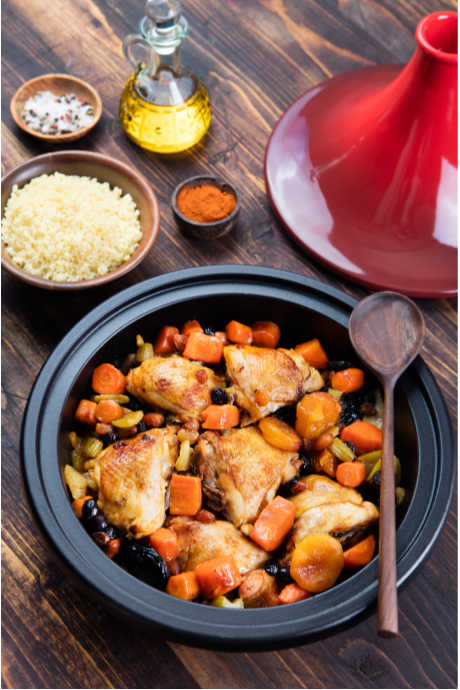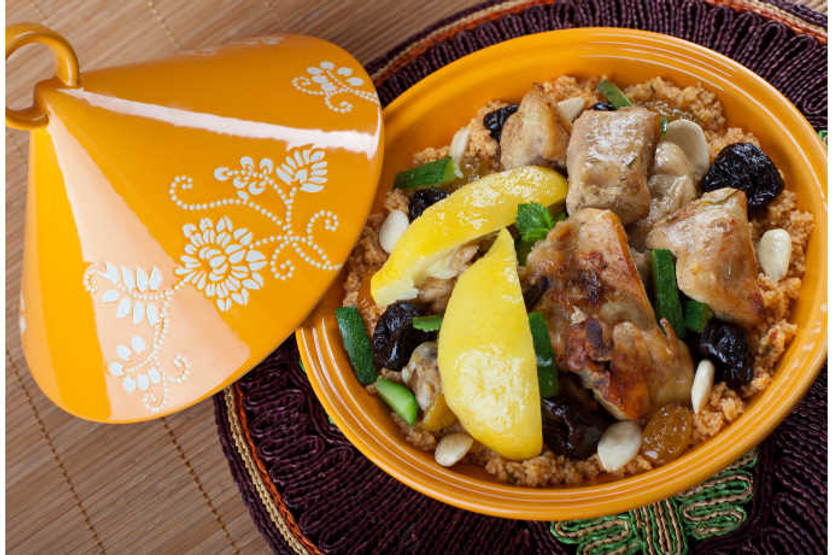Tagine Recipes For Authentic Ethnic Flavor
Posted by Julie on Apr 1st 2019
We love to go out for ethnic food. While it's not as adventurous as traveling to distant lands and experiencing authentic cuisine firsthand, it's still a delicious way to enjoy a meal. We've been striving to break out of our home cooking comfort zone and try recreating some ethnic favorites at home, like saag paneer, hoisin pork, and tempura.
Another meal we want to cook in our own kitchen is a tagine, which actually calls for a tagine in which to cook it. Confused yet? Keep reading and we'll explain in detail.
What Is a Tagine?
A tagine is both the name of a cooking vessel and a dish you cook in that vessel. In short, you cook a tagine in a tagine. First, we’ll cover the details of this unique piece of cookware. Later in this post, we’ll offer some recipe recommendations.
A tagine consists of two parts: a shallow circular dish, and a tall conical lid. When cooking with a tagine, layer food in the dish, then place the lid on top. Then cook low and slow, whether on the stovetop, in the oven, or over a fire in the traditional way. Tagines really are the original slow cooker, and they impart similar depth of flavor, but they look far more elegant.

Tagines are used most often in Moroccan and other North African cooking. It is still debated whether tagines originated with the Islamic Empire, or if their invention resulted from the introduction of ceramics to North Africa by the Romans. However, the collection of Arabic folk tales “One Thousand and One Nights” describes a similar style of cooking, dating back to the ninth century.
While traditional tagines are made from unglazed clay, you can find modern tagines in glazed ceramics, cast iron, and a combination of both. Ceramic tagines should be seasoned, and yours will almost certainly come with instructions. Some are durable enough to go from stovetop to oven, while others are more delicate and better suited to serving. We carry the Emile Henry Tagine in three colors, made in France from glazed clay that’s even grill-safe.
Why Cook With Tagines
The design of a tagine is not only beautiful, but functional too. Steam rises from the food as it cooks, and the sloped sides of the lid allow the condensation to drip back down. Because the liquid returns to the food, over and over again, not much water is needed for cooking. It’s an especially efficient cooking method in drought conditions or when clean water is not readily available.

Similar to slow cookers and Dutch ovens, a tagine keeps food moist as it cooks at a low temperature for a long period of time. The longer cooking duration gives flavors time to combine and meld. The base even doubles as a serving dish; there’s no need to transfer food from the base to a separate serving bowl or platter. Use a trivet underneath to protect your counter or table.
Tagine Recipes
Ready to start cooking? These recipes are meant to be cooked in a tagine, though you could get away with using a slow cooker or Dutch oven. But we think half the appeal is the presentation of a dish in a tagine. Picture yourself setting down the base on your dining room table, and whisking away the lid to reveal the meal you’ve created.

We’re itching to try this recipe from Mosaic, the blog on the fair trade, ethically-sourced gift site Ten Thousand Villages. It’s full of authentic Moroccan flavors from ingredients such as dried apricots, cinnamon, turmeric, and ginger, plus onion, garlic, and cilantro. When you read through the list of ingredients, you may be surprised by the amount of water that’s called for. However, most of that water will be used to create a sauce with the apricots, cinnamon, and other sweet ingredients. You’ll drizzle that sauce over the cooked chicken, onions, and garlic, and then add toasted almonds.

If you’d like more variety to choose from, check out this assortment of tagine recipes collected by Brit.co. You’ll find that chicken and apricots are common ingredients, as are chickpeas, dates, almonds, and lamb. When ingredient combinations recur, it’s because chefs know they go well together. Give them a try, and you might find you love them.
Finally, if none of these recipes appeals to you, this post from Israeli Kitchen might inspire you to go rogue with your tagine. Put together any combination of ingredients you have on hand and that sounds good to you. We loved this line from the author: “I put beets and an egg in mine, and no tagine police showed up. Not yet, anyway.”
 Free shipping over $49
Free shipping over $49










